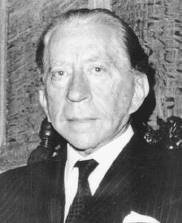
Laundering by hand involves soaking, beating, scrubbing, and rinsing dirty textiles. Before indoor plumbing, individuals also had to carry all the water used for washing, boiling, and rinsing the laundry from a pump, well, or spring. Water for the laundry would be hand carried, heated on a fire for washing, then poured into the tub. That made the warm soapy water precious; it would be reused, first to wash the least soiled clothing, then to wash progressively dirtier laundry.
Removal of soap and water from the clothing after washing was a separate process. First, soap would be rinsed out with clear water. After rinsing, the soaking wet clothing would be formed into a roll and twisted by hand to extract water. The entire process often occupied an entire day of hard work, plus drying and ironing.
Nearly five billion of the world's population of seven billion as of 2010 still hand-wash their clothes.
An early example of washing by machine is the practice of fulling. In a fulling mill, cloth was beaten with wooden hammers, known as fulling stocks or fulling hammers.
The first English patent under the category of washing machines was issued in 1691. A drawing of an early washing machine appeared in the January 1752 issue of The Gentleman's Magazine, a British publication. Jacob Christian Schäffer's washing machine design was published in 1767 in Germany. In 1782, Henry Sidgier issued a British patent for a rotating drum washer, and in the 1790s, Edward Beetham sold numerous "patent washing mills" in England. One of the first innovations in washing machine technology was the use of enclosed containers or basins that had grooves, fingers, or paddles to help with the scrubbing and rubbing of the clothes. The person using the washer would use a stick to press and rotate the clothes along the textured sides of the basin or container, agitating the clothes to remove dirt and mud. This crude agitator technology was hand-powered, but still more effective than actually hand-washing the clothes.
More advancements were made to washing machine technology in the form of the rotative drum design. Basically, these early design patents consisted of a drum washer that was hand-cranked to make the wooden drums rotate. While the technology was simple enough, it was a milestone in the history of washing machines, as it introduced the idea of "powered" washing drums. As metal drums started to replace the traditional wooden drums, it allowed for the drum to turn above an open fire or an enclosed fire chamber, raising the water temperature for more effective washes.
It would not be until the 19th century when steam power would be used in washing machine designs.
In 1862, a patented "compound rotary washing machine, with rollers for wringing or mangling" by Richard Lansdale of Pendleton, Manchester, was shown at the 1862 London Exhibition.
The first United States Patent, titled "Clothes Washing," was granted to Nathaniel Briggs of New Hampshire in 1797. Because of the Patent Office fire in 1836, no description of the device survives. The invention of a washing machine is also attributed to Watervliet Shaker Village, as a patent was issued to an Amos Larcom of Watervliet, New York, in 1829, but it is not certain that Larcom was a Shaker. A device that combined a washing machine with a wringer mechanism did not appear until 1843, when Canadian John E. Turnbull of Saint John, New Brunswick patented a "Clothes Washer With Wringer Rolls."[9] During the 1850s, Nicholas Bennett of the Mount Lebanon Shaker Society at New Lebanon, New York, invented a "wash mill", but in 1858 he assigned the patent to David Parker of the Canterbury Shaker Village, where it was registered as the "Improved Washing Machine".
If you want to read a lot more, go here: https://en.wikipedia.org/wiki/Washing_machine
- 2 tablespoons olive oil
- 2 teaspoons lemon juice
- 1 teaspoon dried oregano
- 1/2 teaspoon garlic powder
- 1/2 teaspoon salt
- 1/4 teaspoon black pepper
- 2 pounds boneless, skinless chicken thighs
- 1 (2.25-ounce) can sliced black olives, drained well
- 1/2 cup crumbled feta cheese
- In a large bowl, combine oil, lemon juice, oregano, garlic powder, salt, and pepper; mix well. Add chicken and toss until evenly coated. Cover and refrigerate at least 1 hour.
- Preheat air fryer to 380º.
- Coat air fryer basket with cooking spray. Place chicken in basket. Air fry 17 to 18 minutes or until no longer pink in center. Serve topped with sliced olives and crumbled feta.
- Fairy Cakes
- Patty Cakes
- Cup Cakes (different from Cupcakes (one-word)














1 comment:
Merry Christmas! Love how the chicken recipe looks- and healthy the ingredients sound.
As today will be catching up on laundry day- I thank you for the renewed appreciation of modern laundry appliances.
Gpdspeed
Post a Comment